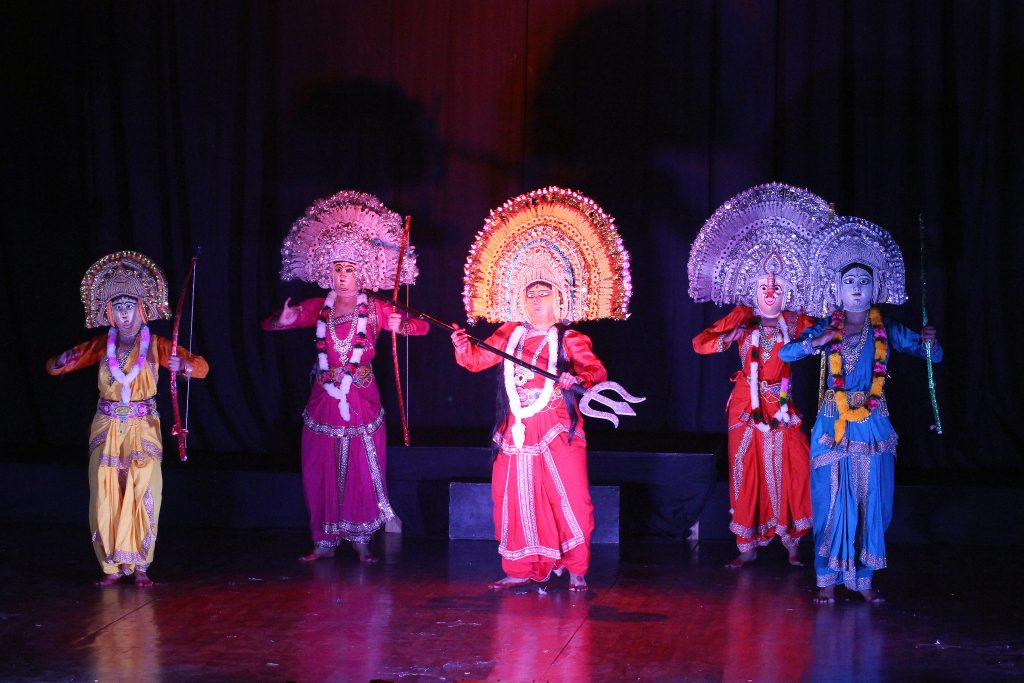Team L&M
Chhau is a semi-classical Indian dance with martial, tribal and folk traditions. It has three styles – the Purulia Chau of Bengal, the Seraikella Chau of Jharkhand, and the Mayurbhanj Chau of Odisha. The dance form originated in Eastern India.
The dance ranges from celebrating martial arts, acrobatics and athletics performed in festive themes of a folk dance, to a structured dance with religious themes found in Shaivism, Shaktism and Vaishnavism. The costumes vary between the styles, with Purulia and Serakeilla using masks to identify the character. The stories enacted by Chhau dancers include those from the Hindu epics the Ramayana and the Mahabharata, the Puranas and other Indian literature.
The dance is traditionally an all males troupe, regionally celebrated particularly during spring every year, and may be a syncretic dance form that emerged from a fusion of classical Hindu dances and the traditions of ancient regional tribes. The dance is amazing and brings together people from diverse socio-economic backgrounds in a festive and religious spirit.[
The Seraikella Chhau developed in Seraikela, when it was under the rule of Kalinga’s Gajapati Rule the present day administrative headquarters of the Seraikela Kharsawan district of Jharkhand, the Purulia Chhau in Purulia district of West Bengal and the Mayurbhanj Chhau in Mayurbhanj district of Odisha. The most prominent difference among the three subgenres is regarding the use of masks. While, the Seraikela and Purulia subgenres of Chhau use masks during the dance, the Mayurbhanj Chhau uses none.
The Seraikella Chhau’s technique and repertoire were developed by the erstwhile nobility of this region who were both its performers and choreographers, and in the modern era people from all backgrounds dance it. The Seraikella Chhau is performed with symbolic masks, and the acting establishes the role the actor is playing. The Purulia Chhau uses extensive masks shaped in the form of the character being played; for example, a lion character has a face mask of lion and body costumes too with the actor walking on all fours. These masks are crafted by potters who make clay images of Hindu gods and goddesses and is primarily sourced from the Purulia district of West Bengal. In the Mayurbhanj Chhau is performed without masks and is technically similar to the Seraikella Chhau
